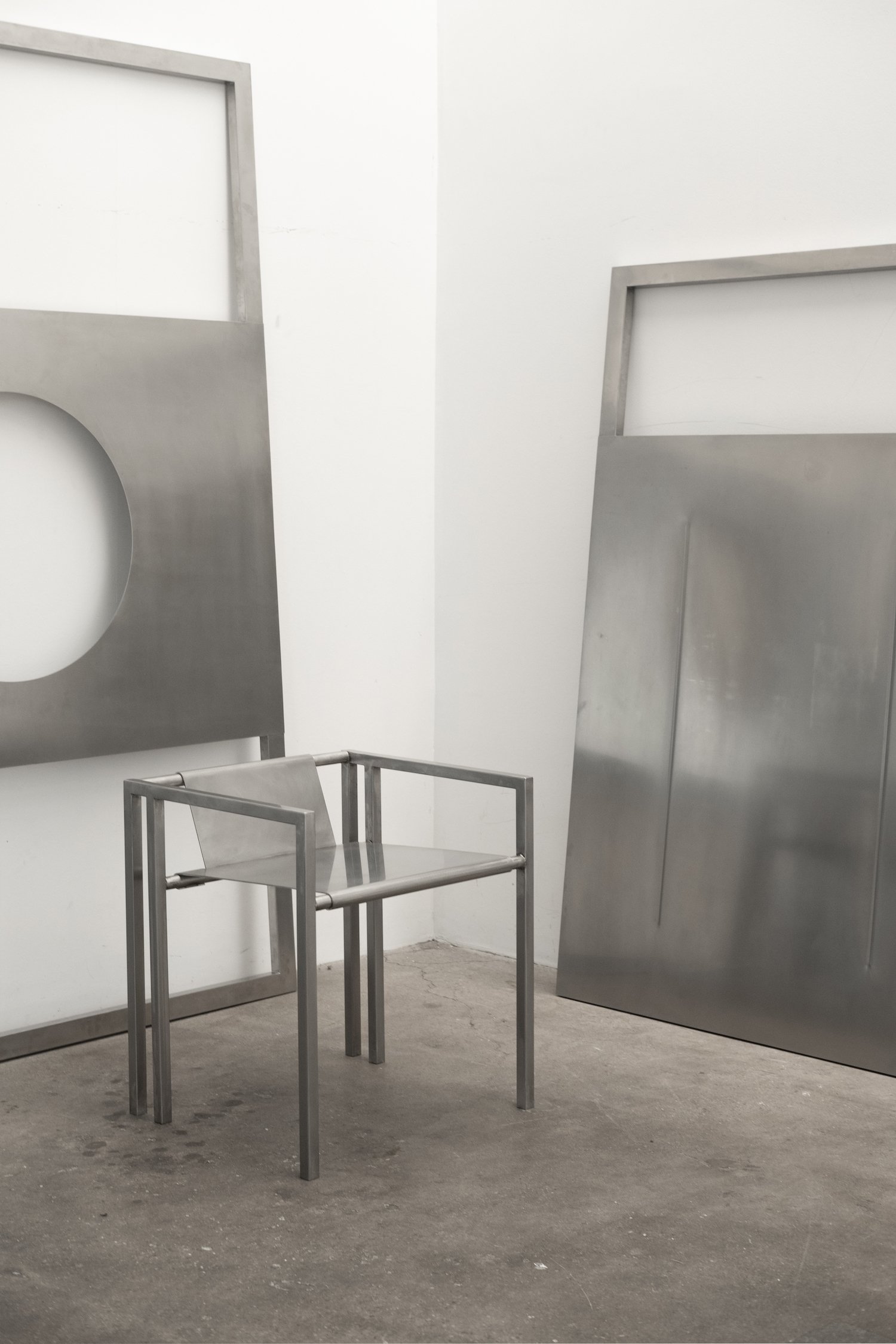Chair 202002
Project: Chair 202002
Designer: August Hugo
Location: Copenhagen, Denmark
Type: Furniture / Experimental Seating
Chair 202002 by August Hugo is a play in restraint. Formally, it operates within a strict geometric system four upright legs, two horizontal arm rails, and a suspended seat and backrest all held within a continuous steel frame. At its core, it is a rational structure. But beyond its utilitarian silhouette, it is an exercise in how proportion, surface, and space can express a deeper, more architectural presence.
The chair is made entirely of brushed stainless steel, a material that carries with it a specific gravity both literal and perceptual. It is not softened, bent, or made to imitate comfort. Instead, it’s left raw and exposed. Each edge is cut clean. Each plane, unadorned. This decision to work within a single material system gives the piece a monolithic quality, yet it remains approachable through its scale and proportion. The steel is treated not as a surface finish, but as substance form and material are inseparable.
The composition is measured and symmetrical. The seat and backrest float within the outer frame, seemingly weightless despite the density of the material. This offset between visual lightness and material weight creates a tension that underpins the entire design. The backrest, slightly inclined and trapezoidal in form, subtly deviates from the rectilinear logic of the outer frame, introducing a softness that only geometry can offer. The seat flat, planar, and taut sits just above the midpoint, delicately supported yet unmoving. What stands out in Chair 202002 is its honest exposure of construction. Welds are visible and intentionally unrefined. They serve not as blemishes, but as reminders of touch, of effort, of the joining of parts. There is no hiding in this piece. It refuses to conceal the process of making, and in doing so, builds trust with the viewer. The frame is comprised of square and round stock steel, each selected for specific functional and visual qualities. The round bar offers subtle contrast in form, especially along the upper rail, where it softens the visual stiffness of the rectilinear grid.
The brushed finish is consistent throughout but never overly polished. It avoids reflection and instead diffuses ambient light across its surface. What emerges is a quiet rhythm light moving softly across planes, shadows thickening where parts meet, and reflections barely forming before dissolving. Each photo reveals a new mood; from dead-on frontality to oblique shadowplay, the object performs without drama. It’s not theatrical. It’s present. The piece is not concerned with comfort in the traditional sense. It does not yield. It holds. The seat and backrest are steel sheets, bent with minimal curvature. To sit is to engage with the object’s logic. The dimensions are considered neither tight nor generous but the act of sitting is a reminder that this chair does not accommodate the body, it hosts it. It is an invitation to stillness, posture, and spatial awareness.
Spatially, Chair 202002 is not a background object. Its lines project into the room. Its open frame lets air pass through, yet its mass anchors it. When placed in a white room or on a concrete floor, it doesn’t blend in it calibrates the space. The chair becomes a point of reference. Its strict visual language brings clarity to its surroundings, making negative space feel intentional and charged.
August Hugo’s approach in this work is both architectural and poetic. Chair 202002 is not simply a place to sit it is a spatial tool. It is a rhythm of uprights and horizontals, a collection of weights and gaps, a language of honesty told through metal. It is a piece that embraces stillness not as absence, but as assertion. And in its absolute restraint, it achieves something difficult to name but easy to feel.











